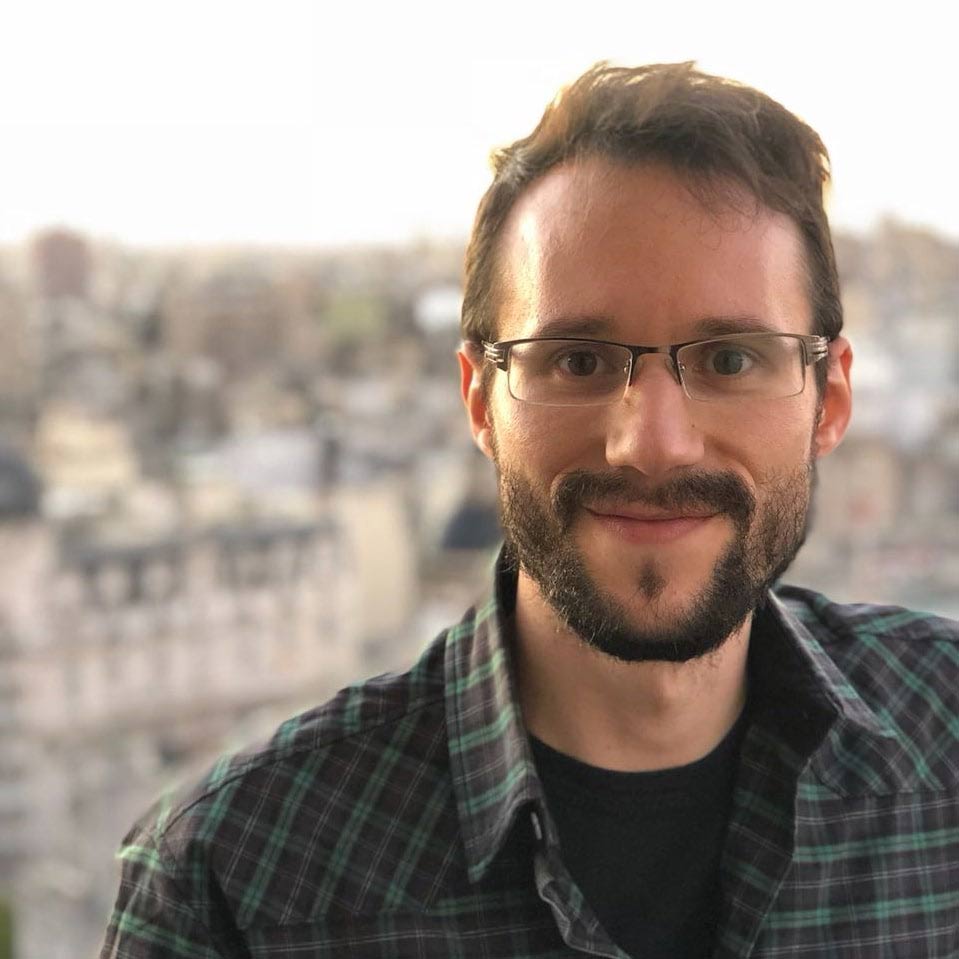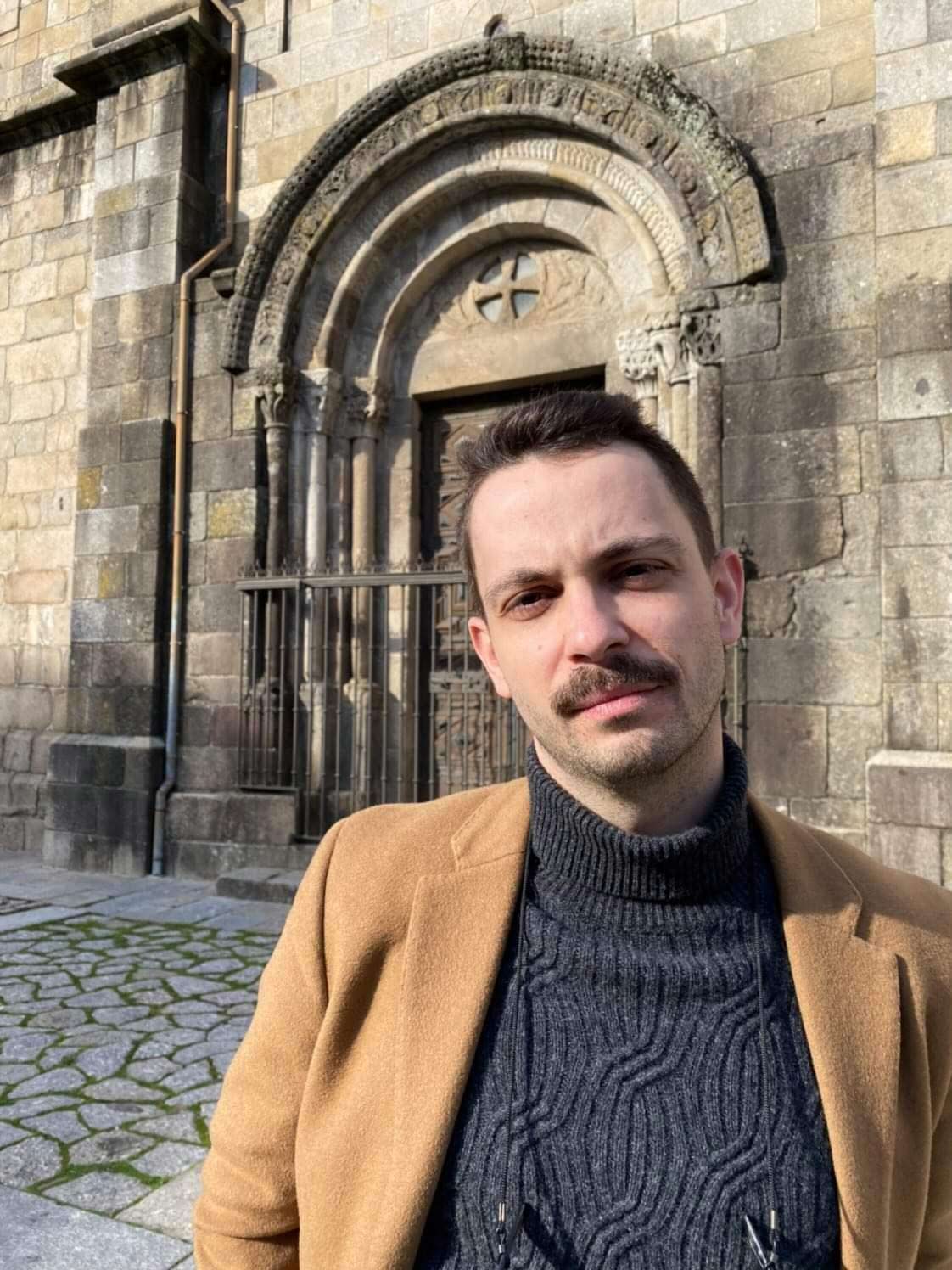Visiting researchers
2019
Borja Franco Llopis

Borja Franco Llopis
Universidad Nacional de Educación a Distancia, Spain
March-May
“La imagen del Islam en el arte efímero portugués (siglos XIV-XVII)”
In recent years, a significant number of studies have analysed the image of the Muslim or Ottoman Empire in Europe. These monographs and works mainly display a point of view that oscillates between orientalism and rejection of the other. Although these texts are important for the contributions they have bequeathed, to this day, there is no study that analyses this figure in the Hispanic sphere, except for small scattered insights and other analyses full of unfounded clichés; a literature that is dramatically reduced should we focus on Portugal, where there is no publication on this subject. It is curious how the Iberian Peninsula, one of the territories with the greatest number of Muslims (converts or otherwise) during the 14th to 17th centuries, has neglected analysis of their visual representation. In the field of literature, on the other hand, there are a greater number of studies that analyse the images of Islam in that territory even if not in the fine arts.
Moreover, just as there are few references to the study of this theme for preserved works of art, when we focus on ephemeral art, the interest aroused has once again been minimal, which is surprising as these manifestations enable a reconstruction of the visual culture of the 14th to 17th centuries, which was not only linked to the large-scale works that we still preserve today, but also to those that were built to celebrate the entry of monarchs into cities, commemorate their death or other festivities linked to the nobility. These paintings and sculptures reached a wider spectrum of the population, as the city actively participated in the festivities, while the paintings that decorated palaces or private residences simply influenced a very small stratum of the population (nobles, ambassadors, kings, etcetera).
As is well known, the triumphal entries, the royal obsequies as well as the festivities commemorating the conquest of different cities were events that united the people with the political power (Bonet, 1979; Bouza: 1998; Mínguez: 2010; Pedraza: 1982; Pizarro: 1991; Zalama: 1996, 2015), in short, spaces for socialising (Perceval, 2004). Each city created a visual apparatus to glorify either the honoured person or the city itself as the victor over the infidel, by means of hieroglyphs, poems and images. Therefore, a detailed study of the triumphal arches and paintings that were hung from these altars to commemorate the military victories of the Habsburgs or their betrothals, where literature and art come together, will help us to complete a polyhedral approach to the representation of the Muslim in Spanish art and then theorise about their modes of visualisation. The publications by Alves (1986), Gan Giménez (1991), García Bernal (2007), Gómes (1985), Montes (1931), Soromenho and Castel Branco, Strong (1998), Torres Megiani (2004), among others, have reconstructed the ephemeral apparatuses of the Muslim in Spanish art, the ephemeral apparatuses in Portugal and very useful to analysis of the historical-artistic context of the cities where these monuments were erected and serve as a basis for our study, but, unfortunately, none focus on analysing the image of Islam as the focal point of their research.
Thus, our project is fundamental because it aims to reconstruct the image of Islam, the enemy, in Portuguese ephemeral architectures during three centuries, both to bestow a “long-term” vision and to allow us to point out the changes that took place between the periods when this territory was part of the Spanish Crown and when again an independent kingdom.
Emir Filipovic

Emir Filipovic
University of Sarajevo, Bosnia and Herzegovina
May
Biographical note
Emir O. Filipović received his PhD. at the University of Sarajevo in 2014. His research areas include the history of chivalry and social elites in medieval Bosnia, as well as the complex relations between the Kingdom of Bosnia and the Ottoman Empire in the 14th and 15th centuries. He is currently an assistant professor of Medieval History at the University of Sarajevo.
Enrique Ruiz Pilares

Enrique Ruiz Pilares
Universidad de Cádiz, Spain
Biographic note
Enrique José Ruiz Pilares received his doctoral degree from Universidad de Cádiz (2017) and is a researcher in PAIDI Medievalismo Gaditano (HUM 182) and the Agustín de Horozco de Historia Antigua y Medieval Seminar at the same university. His research approaches the political, social and economic history of the Early Middle Ages, specifically in the terrain of the former Kingdom of Seville. He is particularly interested in analysing the relationships of power and interactions between societies and the surrounding environment through recourse to new technologies. Among his key publications are: “La estructura del poder de las élites andaluzas bajomedievales: familiares, amigos y vecinos. El caso de Jerez de la Frontera-España” in O papel das pequenas cidades na construçao da Europa Medieval (2017), “Un exemple de relations commerciales entre le Pays de Leon et l´Andalousie au debut du XVIes siece d’ apres le compte d`un marchand de Morlaix”, Annales de Bretagne et des Pays de l’Ouest (2016) – in collaboration with Michel Bochaca –, o “El papel de los matrimonios en la configuración de las relaciones de poder en las élites bajomedievales castellanas. La aplicación del Social Networks Analysis en Jerez de la Frontera (1475-1500)” Norba. Revista de Historia (2011).
E-mail
enrique.pilares@uca.es
Gustavo Fernández Riva

Gustavo Fernández Riva
CONICET – Consejo Nacional de Investigaciones Científicas y Técnicas, Buenos Aires, Argentina
Janeiro-Fevereiro
“Sobre la edición digital de relatos cortos medievales: el caso de Konrad von Würzburg”
Gustavo Fernández Riva

Gustavo Fernández Riva
CONICET – Consejo Nacional de Investigaciones Científicas y Técnicas, Buenos Aires, Argentina
January – February
“Sobre la edición digital de relatos cortos medievales: el caso de Konrad von Würzburg”
Jamie Wood

Jamie Wood
Lincoln University, United Kingdom
April – June
Juan José Sánchez Carrasco
Leandro Ferreira
Lorenzo Lage Estrugo
María Dolores Teijeira Pablos

Maria Victoria Herráez Ortega

Maria Victoria Herráez Ortega
Universidad de León, Spain
April – June
“Prelados entre dos reinos. Relaciones artísticas de Castilla con Portugal en la Baja Edad Media”
Biographic note
Tenured History of Art professor at the University of León since 2000, director of the PAM (Patrimonio Artístico Medieval) research group, integrated into the Institute of Medieval Studies at the University of León and Unidad Consolidada de Investigación 220 recognised by Castilla and León Municipal Council.
Her research fundamentally centres on medieval art, with particular attention to architecture, sculpture and jewellery of the León and Castile kingdoms and themes around artistic patronage. She was lead researcher on the “Plan Director del monasterio de San Pedro de Arlanza (Burgos)”, “Plan Director del monasterio de Santo Tomás de Ávila” and interdisciplinary research projects such as “El patrimonio artístico de san Benito de Sahagún”, “El patronazgo artístico en los reinos de León y Castilla durante la Edad Media. El papel de la monarquía”, and “El Patronazgo artístico en los reinos de León y Castilla durante la Edad Media. El papel del clero (1055-1200)”. She currently leads the research project “El patronazgo artístico en el Reino de Castilla y León (1230-1500). Obispos y catedrales”, financed by the Ministry of the Economy and Competition (ref.: HAR2013-44536-R), which terminates in 2017.
Among her leading publications, as author and editor, there are works including the books Enrique de Arfe y la orfebrería gótica en León (1987); El arte cisterciense en León (1988), Una historia arquitectónica de la catedral de León (1994), Arte del Renacimiento en León. Orfebrería (1997); Esplendor y decadencia de un monasterio medieval. El patrimonio artístico de san Benito de Sahagún (2000), Arte gótico en León (2002), La catedral de León en la Edad Media (2003), Arte, liturgia y devoción. El ajuar de plata de la catedral de Astorga en 1589 (2007), El intercambio artístico entre los reinos hispanos y las cortes europeas en la Baja Edad Media (2009), Reyes y prelados. La creación artística en los reinos de León y Castilla (1050-1500) (2014) o La actividad artística en la catedral de Toledo en 1418. The book Obra y Fábrica OF 761 was the 4th publication in the “Folia Medievalia” collection (2016), published by the Institute of Medieval Studies of the University of León.
She was Commissioner of Cultural Heritage of León, Director of the Department of Artistic and Documental Heritage at the University of León, Dean of the Faculty of Philosophy and Letters of the University of León, Coordinator of the doctoral degree program classed as “Mención de Calidad” “Las relaciones artísticas como vía de intercambio cultural. Artistas, mecenas y clientes”, director of the De Arte journal and president of CEHA – the Spanish Committee for the History of Art.
E-mail
mvhero@unileon.es
Miguel Aguiar

Miguel Aguiar
Universidade do Porto, Portugal
15 January – 15 June
The aristocracy and power: parentage and social reproduction in the Portuguese medieval nobility (1385-1521)
[Original title: A aristocracia e o poder: parentesco e reprodução social na nobreza medieval portuguesa (1385-1521) (SFRH/BD/124781/2016)]
Biographical note
Miguel Pereira Aguiar (Porto, 1991) is a researcher at CEPESE – the Centre of Economic and Society Population Studies and the Laboratoire de Médiévistique Occidentale de Paris (LaMOP), currently writing his doctoral degree at the University of Oporto and Paris 1 Panthéon-Sorbonne University under the supervision of José Augusto de Sottomayor-Pizarro and Joseph Morsel.
His research is dedicated to the aristocracy of the Late Middle Ages, especially across two facets: on the one hand studying chivalry as an “ideological system” that contributed to the foundations for the social reproduction of the aristocracy and, on the other hand, the framework for his doctoral degree project, questioning the practices and representations of lineage in the aristocratic group.
E-mail
miguelper.aguiar@gmail.com
Pedro Martínez García

Pedro Martínez García
Universidad Rey Juan Carlos, Spain
March
Participation in the Workshop Representações da Alteridade nos mundos ibéricos. Da Idade Média à Contemporaneidade
E-mail
pedromartinez@gmx.net
Rebecca Sanmartín Bastida

Rebecca Sanmartín Bastida
Universidad Complutense de Madrid, Spain
September-December
“El Catálogo de Santas Vivas: una investigación sobre la autoridade de la espiritualidad femenina a finales del Medievo en Castilla“
Biographic note
Tenured professor at the Universidade Complutense de Madrid, centres her research on the performativity of 15th and 16th century literature (Theatricity and textuality in “Arcipreste de Talavera”, Queen Mary University, 2003; El arte de morir: La puesta en escena de la muerte en un tratado del siglo XV, Iberoamericana, 2006), after having studied medievalism in the 14th century (Imágenes de la Edad Media: La mirada del Realismo, CSIC, 2002). Sanmartín Bastida has already worked on the research project theme that was presented in the webinar La representación de las místicas: Sor María de Santo Domingo en su contexto europeo (Real Sociedad Menéndez Pelayo, 2012), Las Revelaciones de María de Santo Domingo (Queen Mary, University of London, 2014 with María Luengo), Visionary Food: Forms of Food in the Sixteenth-Century Charismatic Female Discourse (Critical, Cultural and Communications Press, 2015) and El Libro de la oración de María de Santo Domingo: Estudio y edición (Iberoamericana, 2019; with María Victoria Curto).
The professor has also published volumes on contemporary medievalism, recourse to allegory, the medieval sermon, heterodoxy in the 15th and 16th centuries and Saint Teresa. Sanmartín Bastida has already run two R&D research projects on visionary women: “La construcción de la santidad femenina y el discurso visionario (siglos XV-XVI): Análisis y recuperación de la escritura conventual” (Ref. FFI2012-32073, 2013-2015) and “La conformación de la autoridad espiritual femenina en Castilla” (Ref. FFI2015-63625-C2-2-P; 2016-2019). Finally, she worked for various years at the Higher Council of Scientific Research (1996-2004) and at the University of Manchester (2001-2003) as well as undertaking research internships at the Sorbonne (Paris IV) and Harvard Universities; she was also visiting professor and researcher at Queen Mary University, London (2008), Nottingham (2014) and Trento (2016).
E-mail
rebecasb@ucm.es
Stephania Botticchio

Stephania Botticchio
Universidad Complutense de Madrid, Spain
September – December